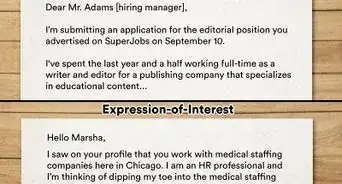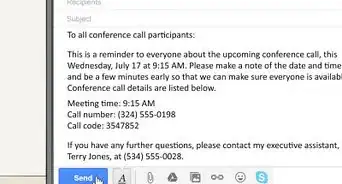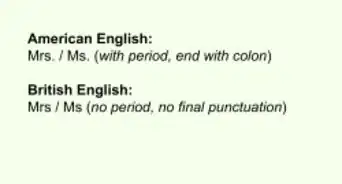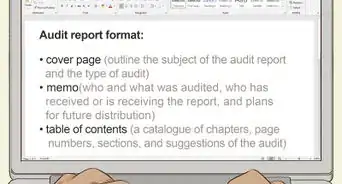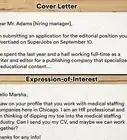wikiHow is a “wiki,” similar to Wikipedia, which means that many of our articles are co-written by multiple authors. To create this article, 21 people, some anonymous, worked to edit and improve it over time.
There are 8 references cited in this article, which can be found at the bottom of the page.
wikiHow marks an article as reader-approved once it receives enough positive feedback. In this case, 80% of readers who voted found the article helpful, earning it our reader-approved status.
This article has been viewed 351,001 times.
Learn more...
Test plans outline the process of testing the functionality of software. A test plan details each step taken to achieve a certain result and states the objective of each action. The plan also highlights the projected resources, risks, and personnel involved in the test. You should use a test plan if you are seeking to eliminate bugs and other errors in your software before it becomes available to customers. Follow the steps below to create a test plan.
Steps
Preparing the Test Plan
-
1Know the basics. What you put in your test plan depends largely on the complexity of the software you’re planning to test. However, there are three basic sections that should always be included in a test plan: Test Coverage, Test Methods, and Test Responsibilities.
- Test coverage defines what you will be testing and what you will not.
- Test methods define how you will be testing each part defined in the “coverage” section.
- Test responsibilities assign tasks and responsibilities to different parties. This section should also include what data each party will record and how it will be stored and reported.
-
2Familiarize yourself with necessary IEEE standards documents. The Institute of Electrical and Electronics Engineers (IEEE) publishes international standards for testing and documenting software and system development.[1] To hold your test plan to the highest standard, consult with the IEEE publications below:
- 29119-1-2013, Software and Systems Engineering - Software Testing - Part 1: Concepts and Definitions.[2]
- 29119-2-2013, Software and Systems Engineering - Software Testing - Part 2: Test Processes.[3]
- 29119-3-2013, Software and Systems Engineering - Software Testing - Part 3: Test Documentation.[4]
- 829-2008, IEEE Standard for Software and System Test Documentation.[5]
- 1008-1987 - IEEE Standard for Software Unit Testing.[6]
Advertisement -
3Consult a template. You can find templates for test plans online. The best source for templates is the IEEE library, but access does cost a fee.
- Dublin City University also offers a free test plan template, based on IEEE 829 standards.
Writing the Test Plan
-
1Write the introduction. Your introduction functions as the “executive summary” of the test plan: its goals, its scope, and its schedule. This should be kept brief, as you will go into further detail in subsequent sections of the test plan.[7]
- Your goals and scope statements should define, in general terms, the methods that will be used in the testing process and the projected results. The scope statement should also include the most critical performance measures, as well as a list of what the test plan will not address, and why.
- A schedule details the increments of time in which each phase of the test will be completed.
- Related documents include any peripheral material that is relevant to the current project, such as lists of specifications.
-
2Define your objectives. Your test plan should clearly define what you will test and why you will test it. These should always be based on industry standards.[8]
- Determine what the scope of the test is. What scenarios will be tested?
- Determine what is out of scope for the test. What scenarios will not be tested?
- Common scenarios include Module Testing, Integration Testing, Systems/Acceptance Testing, and Beta Testing.
-
3Write a section on required resources. This section describes all of the resources needed to complete the testing, including hardware, software, testing tools, and staff.[9]
- When accounting for your staff, make sure to detail the responsibilities required of each member and the training needed to execute those responsibilities.
- Make sure to document the exact specifications of hardware and software.
-
4Write a section on risks and dependencies. Detail all the factors that your project depends on and the risks involved in each step. The level of acceptable risk in your project will help determine what you will and will not test.[10]
- Consider the likelihood of various risks. You will need to prioritize the critical areas.
- Be aware of any vague or unclear requirements. Users often lack the expertise to understand technical language or procedures, so user misunderstanding could pose a risk.
- Use your past “bug” history to help you identify areas for concern and extra testing.
-
5Write a section on what you are going to test. List what new aspects you will be testing and what old aspects you will be re-testing. Make sure to detail the purpose for each test.
- You can use software application inventories, IEEE guidelines, and other sources to help you determine this list.
- This section also represents your “deliverables,” or what data you will deliver to the client once the testing is complete.
-
6Write a section on what you will not be testing. List any features that will not be tested during the current project. Reasons not to test features include:
- The feature will not be included in this version of the software
- The feature is low-risk or has been used before without issue
-
7List your strategy. This section outlines the overall test strategy for your test plan. It will specify the rules and processes that will apply to the tests outlined above.[11]
- Include information on tools to be used, what metrics will be collected and at what level, how many configurations will be tested, and whether there are any special requirements or procedures for testing.
-
8Develop pass/fail criteria. These criteria will guide your testing staff so that they know whether testing objectives have been achieved. This section can also include “exit criteria,” so that your staff know when it is acceptable to stop testing a certain feature.
- You should also include a list of suspension criteria and resumption requirements. This information tells testers when to pause tests and what the acceptable level of defect is to resume them.
-
9Write a list of documents that will be produced during testing. Also known as “deliverables,” these documents are the data, reports, scripts, and results that will be produced by testing.
- It’s a good idea to assign these deliverables to “owners” who are responsible for their delivery. Assign deadlines by which they are due.
-
10Write a section on the results of your project. Outline all the goals that you hope to achieve during the testing process. Detail who is in charge of final approvals.
Community Q&A
-
QuestionWhere can I see an example of a test plan?
 Community AnswerJust typing it into Google will allow you too see examples for images and such that might be helpful or college websites like mentioned above.
Community AnswerJust typing it into Google will allow you too see examples for images and such that might be helpful or college websites like mentioned above. -
QuestionHow can I prepare for an exam?
 Community AnswerReview your notes and information in the textbook, and find practice tests that relate to the subject of the exam.
Community AnswerReview your notes and information in the textbook, and find practice tests that relate to the subject of the exam. -
QuestionIs an exam plan the same a test plan?
 Community AnswerNo, in a test plan, the lessons are less then exams, so you have to plan more for an exam than tests.
Community AnswerNo, in a test plan, the lessons are less then exams, so you have to plan more for an exam than tests.
References
- ↑ http://standards.ieee.org/
- ↑ https://www.iso.org/standard/45142.html
- ↑ https://www.iso.org/standard/56736.html
- ↑ https://www.iso.org/standard/56737.html
- ↑ https://standards.ieee.org/ieee/829/3787/
- ↑ https://ieeexplore.ieee.org/document/27763
- ↑ https://www.ibm.com/docs/en/elm/7.0.3?topic=tutorials-develop-test-plan
- ↑ https://www.indeed.com/career-advice/career-development/how-to-write-test-plan
- ↑ https://www.indeed.com/career-advice/career-development/how-to-write-test-plan
About This Article
To write a test plan for a software, start by writing the introduction, which covers the goals, scope, and schedule for the test. Then, talk about your goals, including what you're going to test, why this is important, and how you're going to test it. Be sure to include a section on required resources, like hardware and testing tools. Write a section on the test's risks and dependencies, as well as what data you're going to provide for the client. List your strategy, pass/fail criteria, and documents you will produce, and then finish the plan with a results section. For advice on what information to include and how to prepare the test plan, keep reading!
















